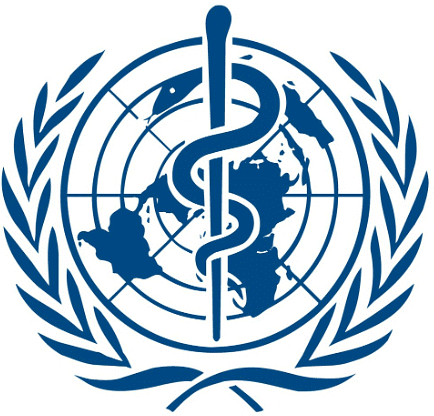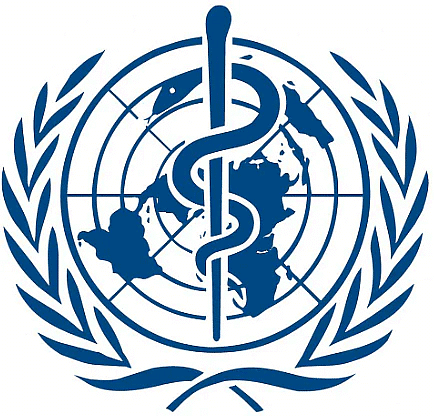Important Questions & Answers: International Context | Legal Studies CUET Preparation - Humanities/Arts PDF Download
Q.1. How do Bedouin nomads live?
Bedouin Nomadic, desert-dwelling Arab peoples of the Middle East and followers of Islam. Traditionally they live in tents, moving with their herds across vast areas of arid land in search of grazing areas. Bedouin society is patrilineal.
Q.2. Guess the name of the organisation from the logo.
World Health Organization.
WHO's emblem was chosen by the first World Health Assembly in 1948. The emblem consists of the United Nations symbol surmounted by a staff with a snake coiling around it. The staff with the snake has long been a symbol of medicine and the medical profession.
Q.3. When was WHO established?
The World Health Organization is a specialized agency of the United Nations whose primary role is to direct international health within the United Nations' system and to lead partners in global health responses. It was established on 7 April 1948, and is headquartered in Geneva, Switzerland. It is a member of the United Nations Development Group.
Q.4. State the achievements of WHO.
- Over 16 million persons diagnosed and cured with multi-drug therapy (MDT)
- Developed guidelines for strengthening participation of persons affected by leprosy in leprosy services, following consultation with people affected, experts, partners and WHO Technical Advisory Group (TAG) members
- Elimination of leprosy at the national level achieved by most countries
Q.5. With reference to the United Nations and its related Agencies, answer the following questions: Explain any three functions of the WHO.
Functions of WHO:
- To make to bring improvement in the fields of primary health care, sanitation, safe drinking water, environmental hygiene etc.
- To arrange periodical conferences and seminars in order to train personnel from different countries in techniques for combating diseases.
- It lay down standards regarding the strength and purity of medicines. It has already set standards for many drugs including biological products.
Q.6. With reference to WHO, briefly describe the following:
(a) Objectives of WHO.
(b) Its functions.
The World Health Organization is a specialized agency of the United Nations whose primary role is to direct international health within the United Nations' system and to lead partners in global health responses.
Objectives:
- To coordinate and oversee the procurement of health services.
- Raise awareness of the extent of illness, suffering and death among mothers and children, and its impact on health as well as social and economic development.
- To create an interface between the developed and developing nations when
- pertaining to health issues.
Functions:
- Providing leadership on matters critical to the health and engaging in partnerships where joint action is needed.
- Setting norms and standards and promoting and monitoring their implementation.
- Providing technical support, catalyzing change, and building sustainable institutional capacity.
- Monitoring the health situation and addressing health trends.
Q.7. Look at the picture and answer the following questions: Name the place where its headquarter is situated.
Name the place where its headquarter is situated.
Geneva, Switzerland.
The World Health Organization (WHO) is a specialized agency of the United Nations that is concerned with international public health. It was established on 7 April 1948, headquartered in Geneva, Switzerland. The WHO is a member of the United Nations Development Group. Its predecessor, the Health Organization, was an agency of the League of Nations.
Q.8. When do we celebrate world Health Day?
The World Health Day is a global health awareness day celebrated every year on 7 April, under the sponsorship of the World Health Organization (WHO).
Q.9. What methods does WHO adopt to fulfil its objectives?
The objectives it has were strategic planning, manpower, economic and political resources, support from memeber countries.
Q.10. What are the objectives of WHO?
The World Health Organization is a specialized agency of the United Nations whose primary role is to direct international health within the United Nations' system and to lead partners in global health responses.
WHO's Objectives are:
- To coordinate and oversee the procurement of health services.
- Raise awareness of the extent of illness, suffering and death among mothers and children, and its impact on health as well as social and economic development.
- To create an interface between the developed and developing nations when pertaining to health issues.
Q.11. Name one disease that the WHO has been able to eradicate in the world.
The one disease that the WHO has been able to eradicate in the world is Smallpox.
- Smallpox was fatal in up to 30% of cases. Smallpox has existed for at least 3,000 years and was one of the world's most feared diseases until it was eradicated by a collaborative global vaccination programme led by the World Health Organization. The last known natural case was in Somalia in 1977.
- WHO coordinates various preparedness and response activities to protect global health from any possible outbreak of smallpox. WHO receives information from governments and other sources on unusual disease outbreaks. It provides technical guidance to help countries respond to these events. WHO has displayed practical information on smallpox diagnosis, surveillance, and outbreak response on its website. It can help countries identify potential sources of the vaccine, should such a need arise.
Q.12. The United Nations was established to be an effective peace keeping international organization. In this context explain the following :
The meaning of Human Rights as incorporated in the Human Charter.
The UN charter declared that the objective of the United Nations was to promote special progress and better standards of life in larger freedom. It further reaffirmed its faith in fundamental human rights. On 10th December UN General Assembly adopted and proclaimed the Universal Declaration of Human Rights. Human Rights refer to those freedoms which should be available to all persons, irrespective of their religion, race, caste, sex, nationality or any of them. These rights include the right to life, right to education, right to own property, right to equality before the law and many other rights.
Q.13. State the functions of WHO.
The World Health Organization is a specialized agency of the United Nations whose primary role is to direct international health within the United Nations' system and to lead partners in global health responses.
Functions:
- Providing leadership on matters critical to the health and engaging in partnerships where joint action is needed.
- Setting norms and standards and promoting and monitoring their implementation.
- Providing technical support, catalyzing change, and building sustainable institutional capacity.
- Monitoring the health situation and addressing health trends.
|
96 videos|3 docs|40 tests
|
FAQs on Important Questions & Answers: International Context - Legal Studies CUET Preparation - Humanities/Arts
| 1. What are the main disciplines included within the International Context Humanities/Arts field? |  |
| 2. How does the International Context Humanities/Arts field contribute to global understanding and cultural exchange? |  |
| 3. What skills can be developed through studying International Context Humanities/Arts? |  |
| 4. How does the International Context Humanities/Arts field address current global challenges? |  |
| 5. What are some examples of research topics within the International Context Humanities/Arts field? |  |
















